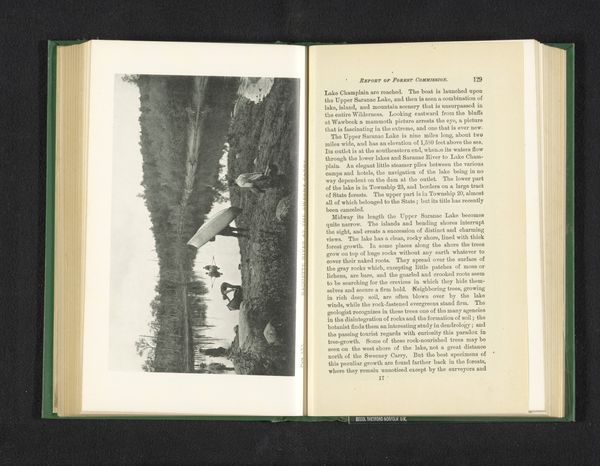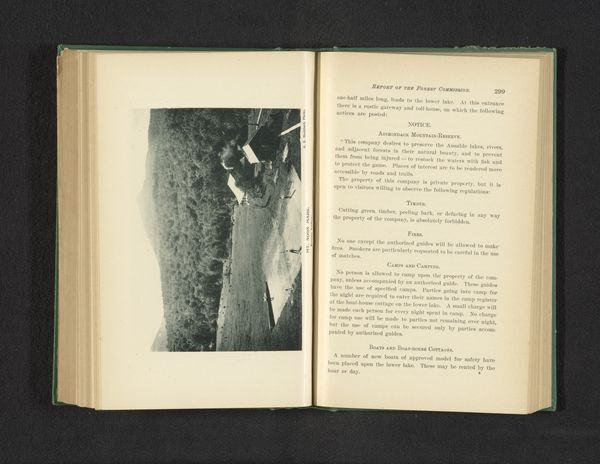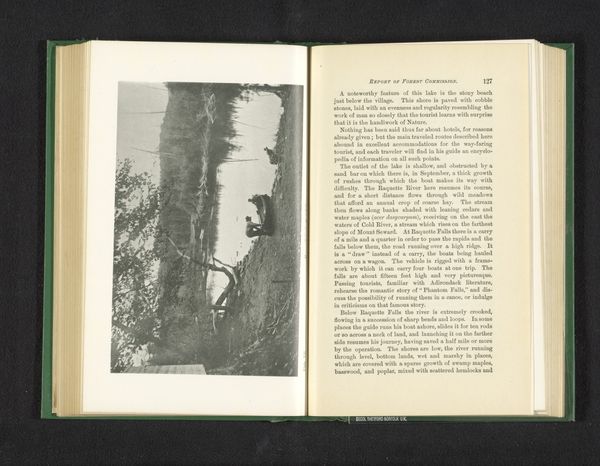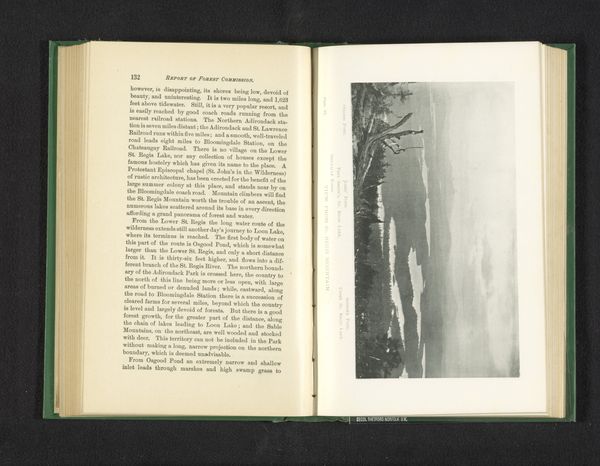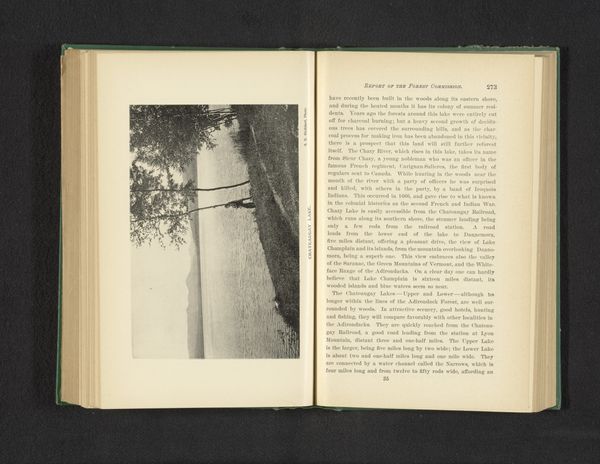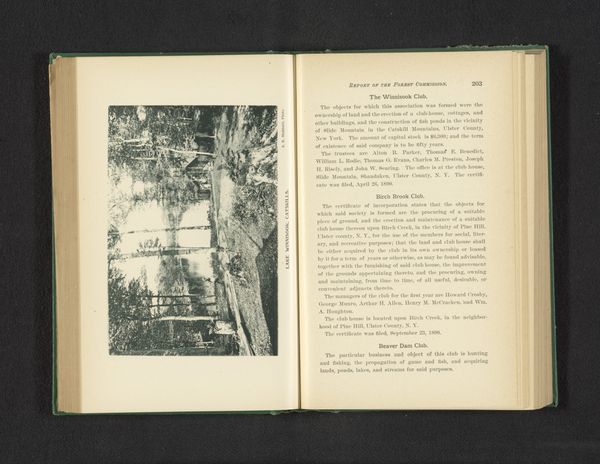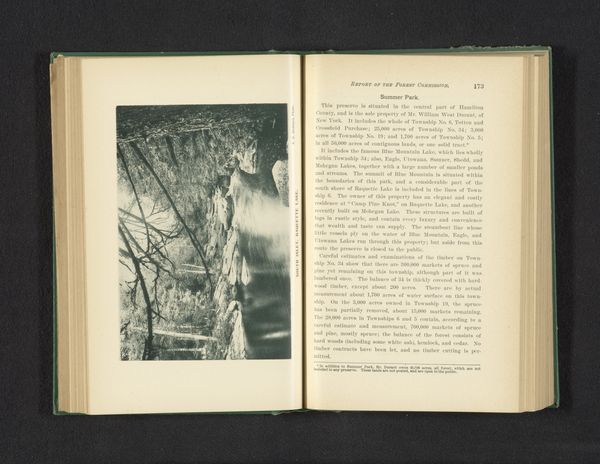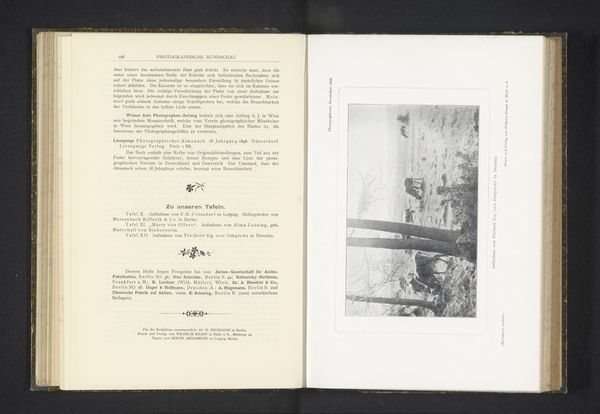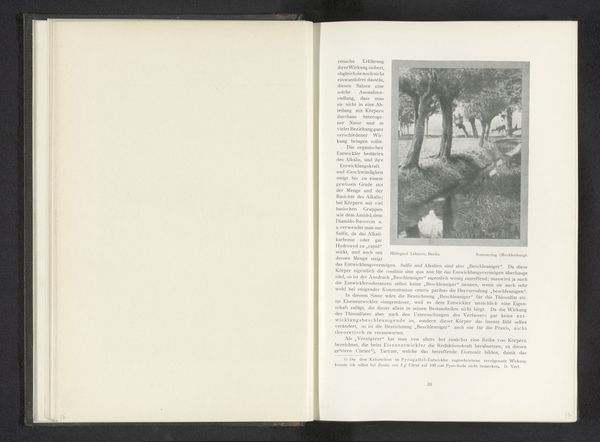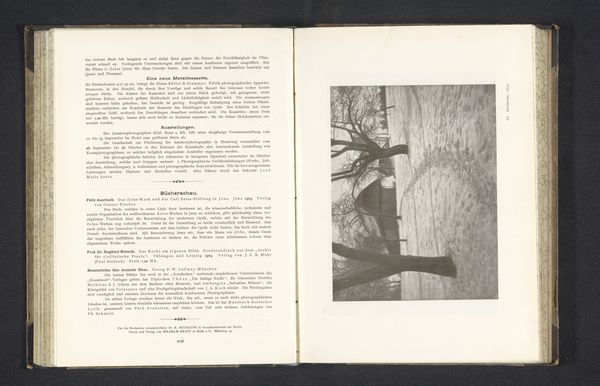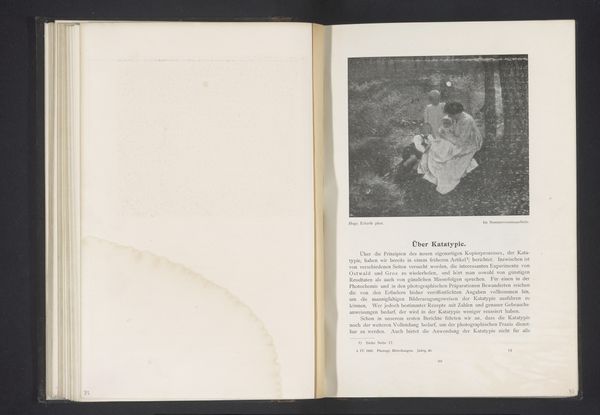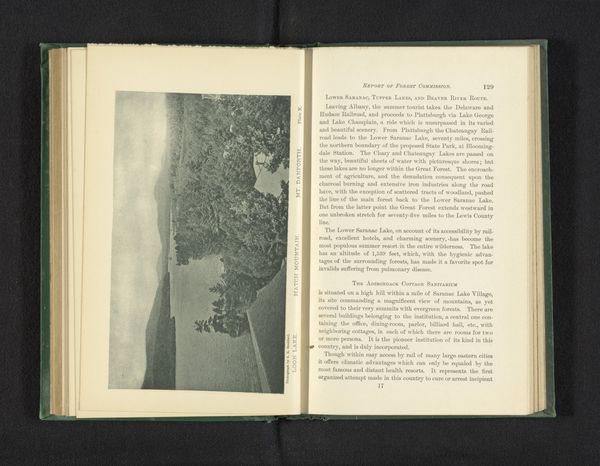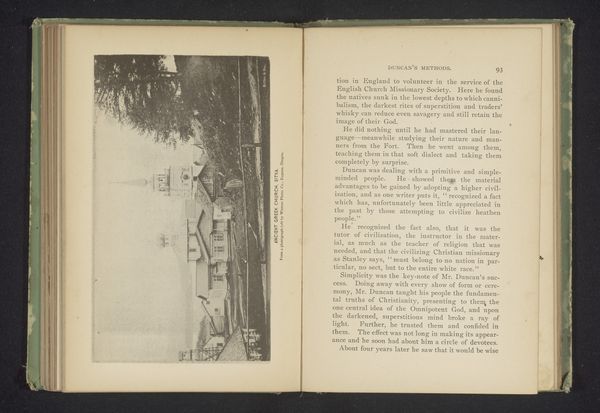
print, photography, gelatin-silver-print, albumen-print
#
aged paper
#
lake
#
16_19th-century
#
pictorialism
# print
#
landscape
#
photography
#
gelatin-silver-print
#
albumen-print
Dimensions: height 113 mm, width 177 mm
Copyright: Rijks Museum: Open Domain
Curator: So, here we have "Loon Lake. Hatch Mountain. Mt. Danforth," a gelatin-silver print made around 1891 by Seneca Ray Stoddard. It captures a view in the Adirondack region. My immediate impression is the photograph has a quiet solemnity about it, a feeling of serene isolation. Editor: Absolutely. Given the history of photography, and the expansion of settler colonialism in the 19th century, landscape photography also means looking at a violent history of territorialization and resource extraction, with artists aestheticizing land grabs as untouched nature. What do you see when you look at this photograph beyond the initial calm? Curator: I am struck by the balance between light and shadow; how Stoddard has captured the different textures. You can almost feel the cool dampness of the forest and lake, and the texture of those trees. It really does invite you in. Editor: While the play of light does beckon the eye, I am reminded of the problematic relationship between artistic license and the objectification of landscapes, erasing Indigenous histories and justifying further encroachment. It is as if these landscapes are devoid of human stories until the photographer and his viewers arrive to claim it. Curator: Well, there's a genuine desire, I believe, to connect with nature and a deep respect, almost reverence. The detail in his compositions—you notice every single leaf, every ripple on the water. I can see a more romantic approach—transcendence, maybe? Editor: It could also signal to a Western desire to control nature through careful documentation and visual mastery, essentializing ideas about unspoiled land. A nature existing solely for consumption of leisure of a rising, industrial bourgeois. This reminds me to ask how many images like this have fed our current climate crisis? Curator: Those are sharp points, valid questions we need to keep in mind. I find Stoddard's use of albumen and gelatin silver printing allows the images to be much more detailed, that sense of depth—almost painterly, in its richness. And he documents places now long-gone or irrevocably changed… isn’t there value in witnessing this landscape? Editor: Perhaps value, but through that lens, and as it relates to environmental or social issues, photography can serve as a tool, both documenting change and challenging dominant narratives. We must then turn and ask about its influence, right? Curator: Yes, to witness, reflect, question our own relationship with landscape and what it truly represents… A dialogue. I can't deny the intrinsic artistic value in his work; in Stoddard's vision of the Adirondacks, nor ignore the lens in which they came to be.
Comments
No comments
Be the first to comment and join the conversation on the ultimate creative platform.
